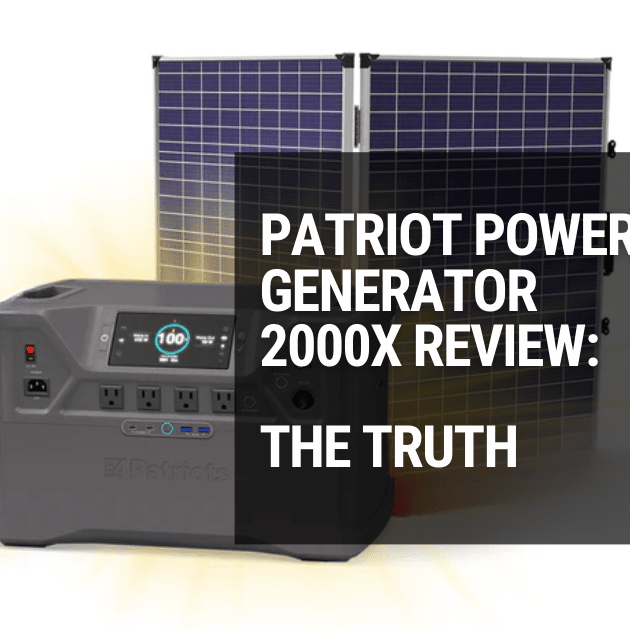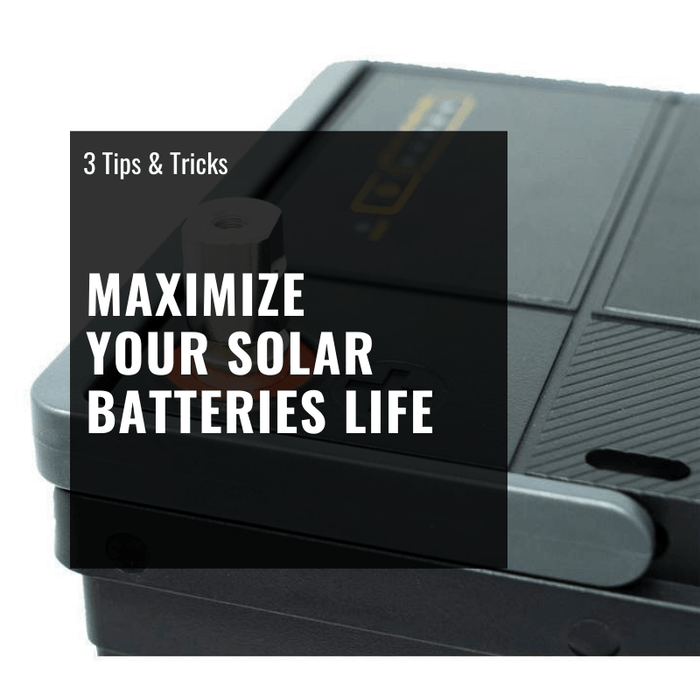
How to Use a Solar Panel – A Step-by-Step Guide for Assembling Your Own Solar Power System

Short on Time? Here’s The Article Summary
Introduction
How to Use a Solar Panel – A Step-by-Step Guide for Assembling Your Own Solar Power System
An ever-increasing number of people are turning to renewable energy sources and looking for ways to install their own solar power system.
Not only can generating your own solar power save you money, it is one of the most effective ways you can reduce the size of your household’s carbon footprint. As solar technology becomes more advanced, solar equipment becomes more affordable and accessible to homeowners. It is now easier than ever before to set up your own solar power system.
To help you understand how you can use solar panels, we have provided this useful step-by-step guide to getting started with solar power. We will start by explaining how solar panels work. From there, we will explain which components you will need and the steps you will need to follow to get your new solar power system running.
Do not wait to join the solar revolution. Read through this guide and start reaping the rewards of free and clean solar electricity!
How Do Solar Panels Work?
In simple terms, solar panels work by absorbing sunlight into their photovoltaic solar cells. The solar cells then generate direct current (DC) energy. When the sunlight hits the silicon cells inside the solar panels, it causes electrons within the cells to start moving. This movement initiates a flow of electric current.
While the process can be described in more complicated terms, the basic principle is that solar panels create DC electricity when they are exposed to natural sunlight.
Step-by-Step Guide for Setting Up a Basic Solar Power System
Step 1: Purchase the Necessary Solar Power Components
Every solar power system will require the same basic pieces of equipment – solar panels, a charge controller, power inverter, and a solar battery. While there are other components, such as breakers, solar cables, mounting hardware, and more that you might need, it is the four main components listed above that are of the most importance.
One of the easiest ways to make sure you have everything you need is to purchase a ready-made solar panel kit. Solar panel kits bundle everything together in one neat package, which is both convenient and more cost-effective.
Take a look at our collection of Solar Generator Kits if you are just starting out with solar power and you think you could benefit from a pre-assembled solar kit that would come with everything you need to get started.  This 400 Watt Lion Energy Beginner Solar Panel Kit features a plug-and-play design and is simple enough that even those with zero solar experience could assemble it quickly and easily.
This 400 Watt Lion Energy Beginner Solar Panel Kit features a plug-and-play design and is simple enough that even those with zero solar experience could assemble it quickly and easily.
While solar panels and solar panel kits may seem somewhat expensive at first glance, it is important to remember that you will recoup these costs over the lifespan of your solar power system, as the savings on your electricity bills will really add up. In fact, most solar panels can usually pay for themselves in as little as 8 years, which really comes into perspective when you realize most solar panels are also designed to last at least 25 years.
Step 2: Calculate Your Power Needs
Before you begin installing your new solar power system, it is important to calculate your power needs, as well as the power potential for your new system. This is actually far less complicated than it sounds. Basically, all you have to do is total up how much electricity you use on a daily basis, or total up the power requirements to run the specific electronics you would like to power using solar energy.
Go through the electronics and appliances you plan on running with solar electricity and note their power rating and run time. From there, calculate the watt-hours used by those electrical devices by multiplying the runtime of each device with its power rating. Once you have this sum, you will know how much electricity your solar power system will need to produce. Do not worry if the equipment or kit you purchased is not up to the task, as you can always expand it in the future. Replacing some of the electricity you use in a day with solar electricity is much better than not replacing any of it.
Our Solar Watt Hour Calculator is a useful resource you can use to determine the load requirements for your new solar power system.
Step 3: Position the Solar Battery
Given that solar panels cannot generate electricity without sunlight, you will need some sort of a battery bank to the store solar electricity your panels create. Otherwise, you would not have access to solar electricity any time the sun was not shining, which means your entire solar power system would be useless at night.  Solar batteries are specifically designed for the rapid and constant charging and discharging that occurs whenever you are dealing with solar electricity. To protect your battery, you will need to connect it to the solar charge controller you would have purchased earlier, either on its own or as part of a complete kit.
Solar batteries are specifically designed for the rapid and constant charging and discharging that occurs whenever you are dealing with solar electricity. To protect your battery, you will need to connect it to the solar charge controller you would have purchased earlier, either on its own or as part of a complete kit.
Each charge controller will come with instructions that explain how you can connect it to a battery. Simply follow the instructions and check for the power indicator to light up. Most charge controllers will indicate that they are operation on a built-in LCD screen, or with simple LED lights.
Step 4: Position the Power Inverter
Since solar panels only generate DC electricity, most people will need to purchase and install a power inverter. This is because most electronics devices and appliances require alternating current, or AC power.
Most solar power inverters are fairly easy to install. Again, follow the manufacturer’s instructions and connect the device to the charge controller. This will ensure that your battery is being charged with AC power, so any connected devices will be able to draw useable electricity.
Step 5: Position and Install the Solar Panels
The solar panels really are the star of the show, which is why they are typically installed last. If you are mounting your solar panels in a permanent position, it is crucial that you do so in an area that receives an adequate amount of sunlight. After all, solar panels are fairly useless unless they are able to absorb sunlight. Find a location that is free from shade and gets as much direct sunlight during the day as possible.
Once you have selected an appropriate location, use the mounting brackets that came with your solar panels and attach them to the roof, fence, deck, or mounting stand you have chosen. Once the solar panels have been mounted in a sun-facing location, you will need to locate the integrated junction box. The junction box will have negative and positive terminals, which can be wired to an MC4 connector, or in a series or parallel connection with additional solar panels.
Once the panels are mounted and you have wired them, you will need to connect everything together. The solar panels will be wired to the charge controller, which will prevent overcharging issues and the reverse flow of electricity. The solar electricity can then flow into the inverter so it can be converted into AC power, which will then be stored in your battery bank.
Expanding Your Solar Power System
If you have already installed a solar power system, you can also increase its power capacity by adding additional solar panels. Wiring additional solar panels into an existing solar power system is also surprisingly simple. New solar panels can be connected to existing panels using either a series of parallel connection, as almost every type of home solar panel is compatible with others.
We recommend purchasing one or more of these basic 100 Watt Solar Panels if you are on a budget (100w solar panel specifications), or only want to slightly increase the power capacity of your system. However, if you have greater power needs, you may want to consider these more powerful 200 Watt High Efficiency 12V Monocrystalline Solar Panels.
For those that are looking for solar panels with a rating of 300 watts or more, consider reading our 300 Watt Solar Panel Guide, which lists recommended products and tells you everything you need to know about these high output solar panels. If you are running a portable solar power setup, our collection of Foldable Solar Panel Suitcases and Blankets is a great place to start. These highly portable solar panels function just like the more rigid panels, but they fold down into a more compact size, which helps with storage and quick assembly. Folding solar panels are a great choice for those that are looking for a mobile power source they can take with them on a camping or RV trip. The water-resistant models are also an excellent choice for boaters.
If you are running a portable solar power setup, our collection of Foldable Solar Panel Suitcases and Blankets is a great place to start. These highly portable solar panels function just like the more rigid panels, but they fold down into a more compact size, which helps with storage and quick assembly. Folding solar panels are a great choice for those that are looking for a mobile power source they can take with them on a camping or RV trip. The water-resistant models are also an excellent choice for boaters.
Final Words
While the technology is incredible and constantly evolving, it is important to remember that installing a solar power system does not have to be as complicated or intimidating as you may think.
By following the steps listed above, you will be able to start using your own clean solar electricity almost immediately. Remember, if you ever have any questions about solar power, you can always reach out to us!
The Ultimate Solar + Storage Blueprint (Mini Course)
Struggling to understand how solar + storage systems actually work? Looking to build or buy your own solar power system one day but not sure what you need? Just looking to learn more about solar, batteries and electricity?
Join 15,000+ solar enthusiasts breaking free from their energy dependence with this short step-by-step video course that will make you a solar + storage expert. Start your journey to energy independence today.
Who is ShopSolar.com?
ShopSolar.com is the #1 digital platform that enables consumers & businesses to source and purchase complete solar + storage solutions direct, saving you thousands in time, energy and money! With over 40,000+ happy customers, we’re on a mission to make solar simple, transparent and affordable.



Comments
Leave a comment